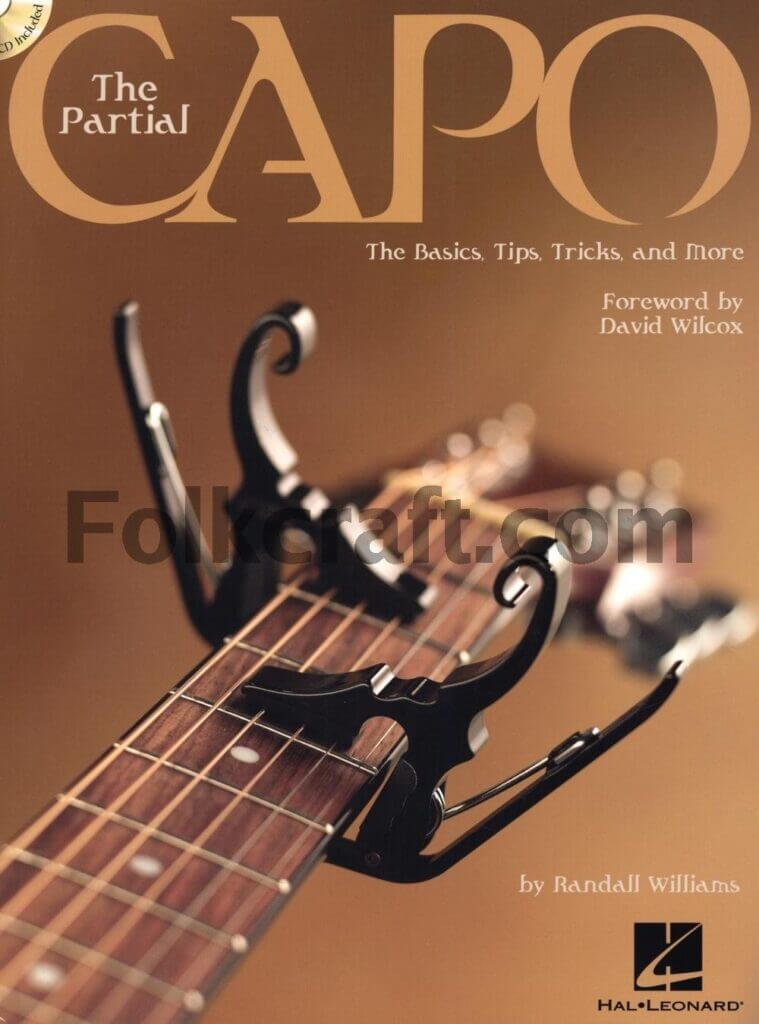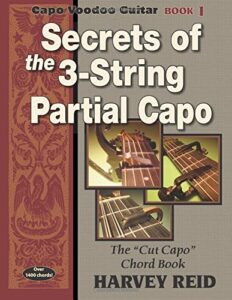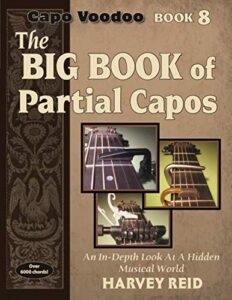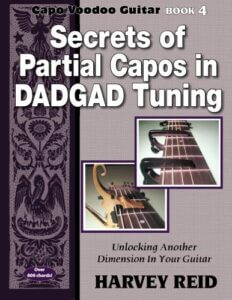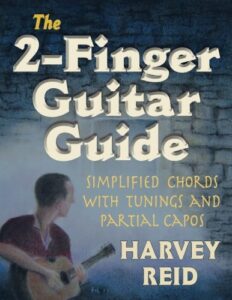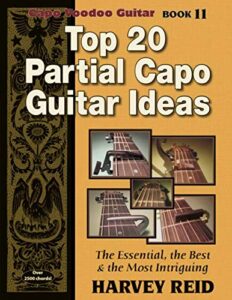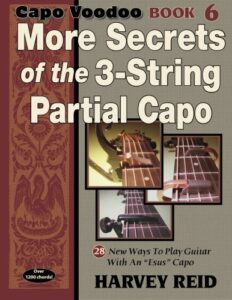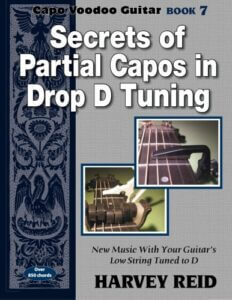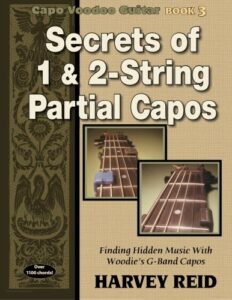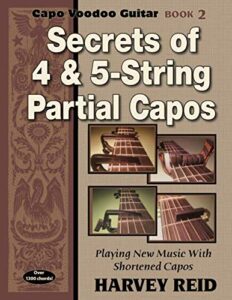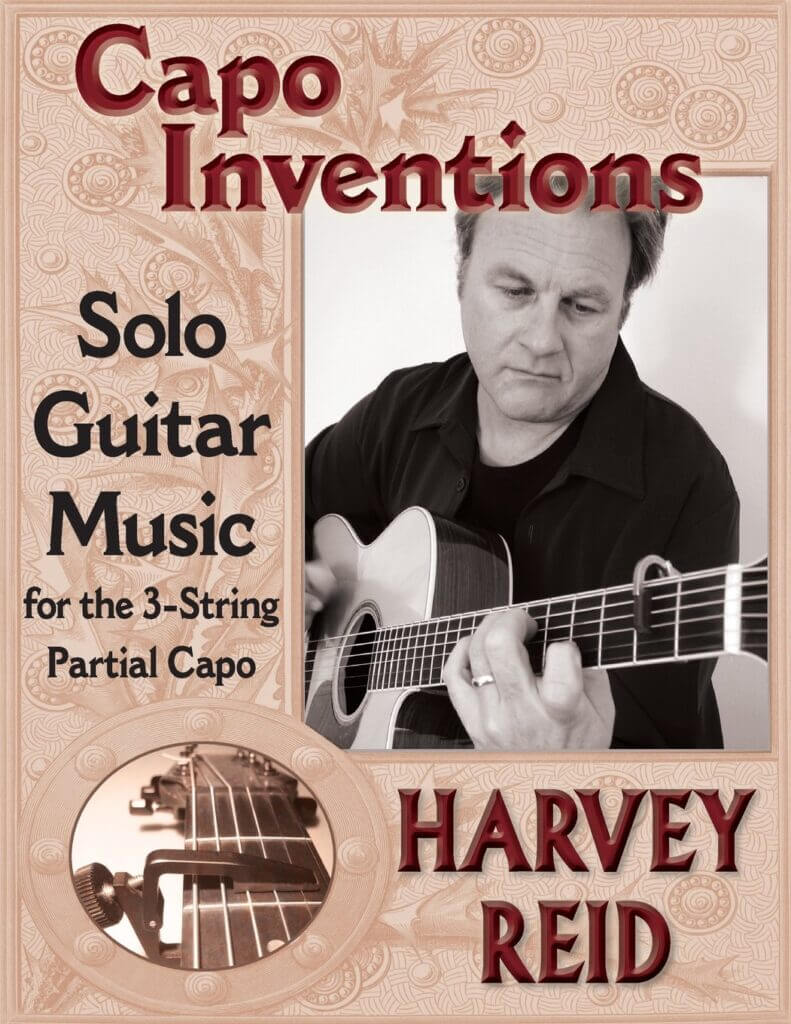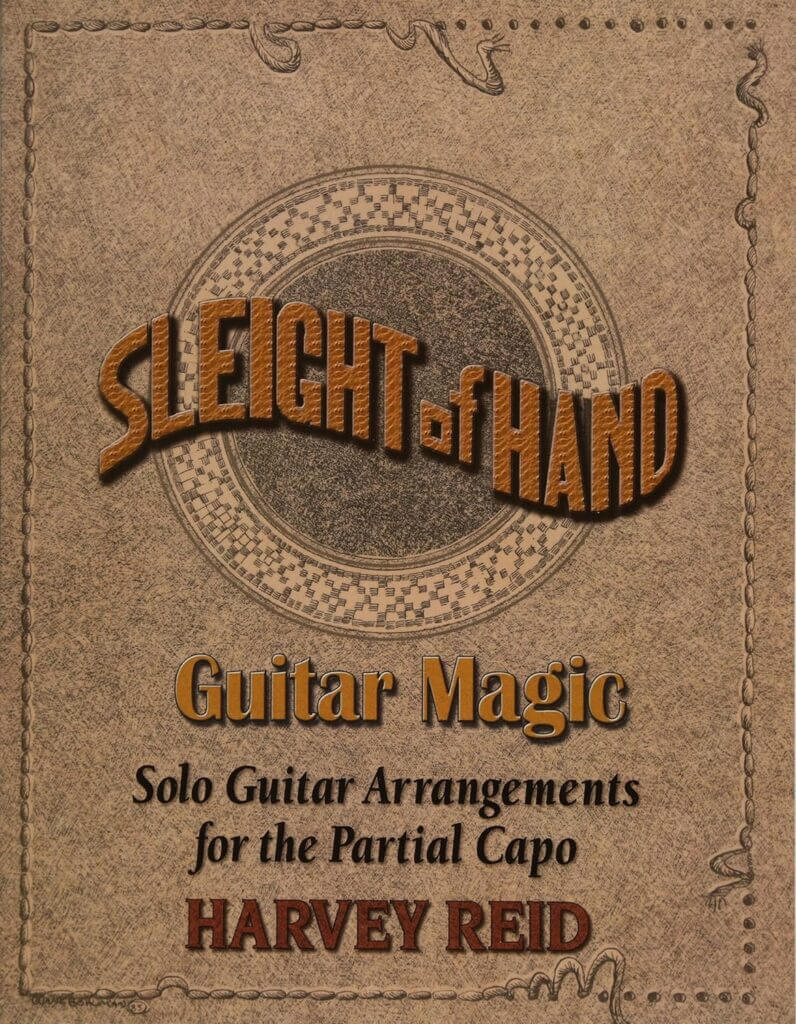Partial Capo: Create Variety in Your Songs
Partial capos sound complicated, but they can make your guitar playing easier and add a unique quality to how your songs sound.
Why try partial capos?
- You want a unique sound to a song for some variety with open tunings, but you don’t want to be constantly tuning up and down when you’re playing. And what a distraction for an audience!
- You play the same chords or have limited guitar skills. For example:
I have small hands, so chords that stretch across 5 frets to create a cool sound are not happening for me. I also like certain chord shapes, but want different sounds to my songs.
- Many times partial capo chords only require one or two fingers. If you’re a beginner this is an easy way to start creating songs with good sounding chords quickly.
We’ll review some standard capos I use as “master” capos in combination with my partial capos, and take a look at 3-String, 4-String, and 5-String partial capos along with a few chord books for each.
Partial Capos
Because you can combine a partial capo with other capos to create some great sounds, and give some variety to your music, you’ll want to find the ones that work best for the job you need done.
If you read the standard capo recommendation post, you know I’m a Shubb fan. And, the fact that they make multiple types of partial capos makes me an even bigger fan.
PARTIAL CAPOS WE RECOMMEND
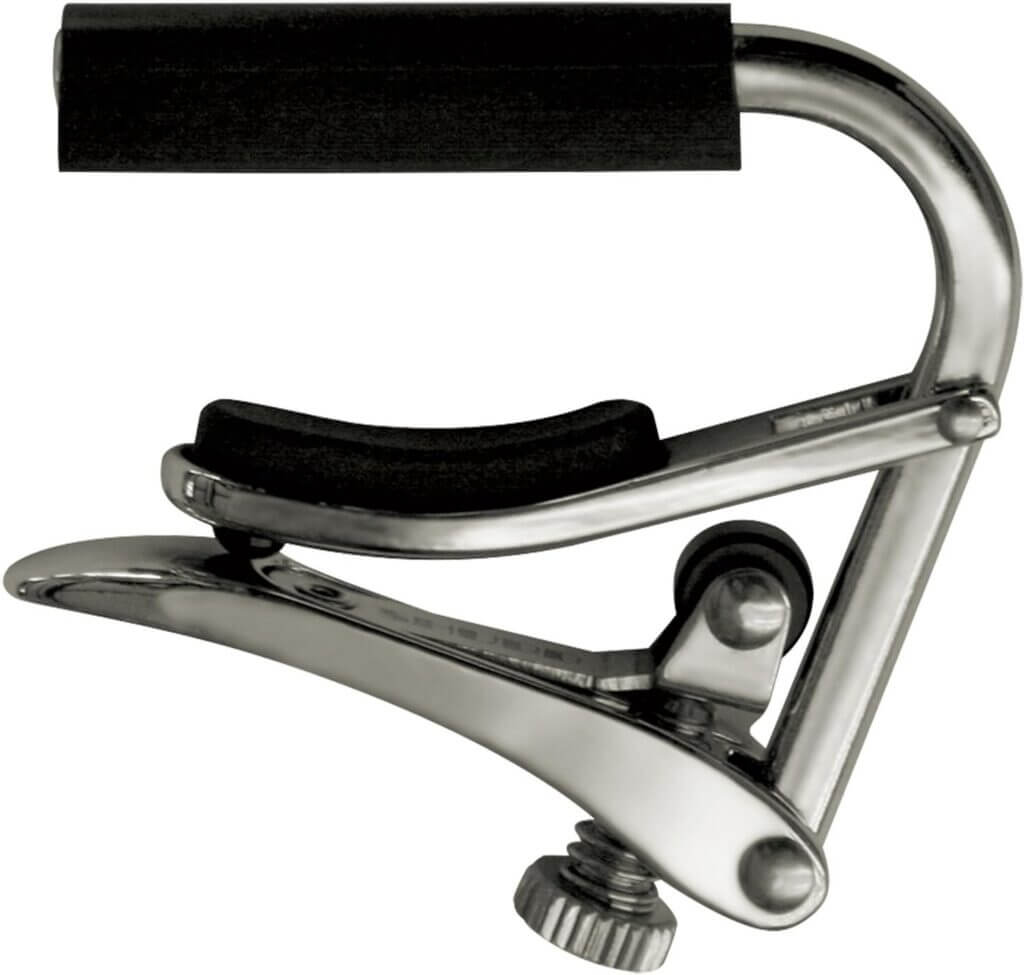
I use this as my 5-String capo for alternate tunings on guitar since it’s a little shorter than the standard Shubb. It’s perfect for the old “4th fret – reverse capo and leave the 6th string open” trick.
I use this as a 4 string capo as well.
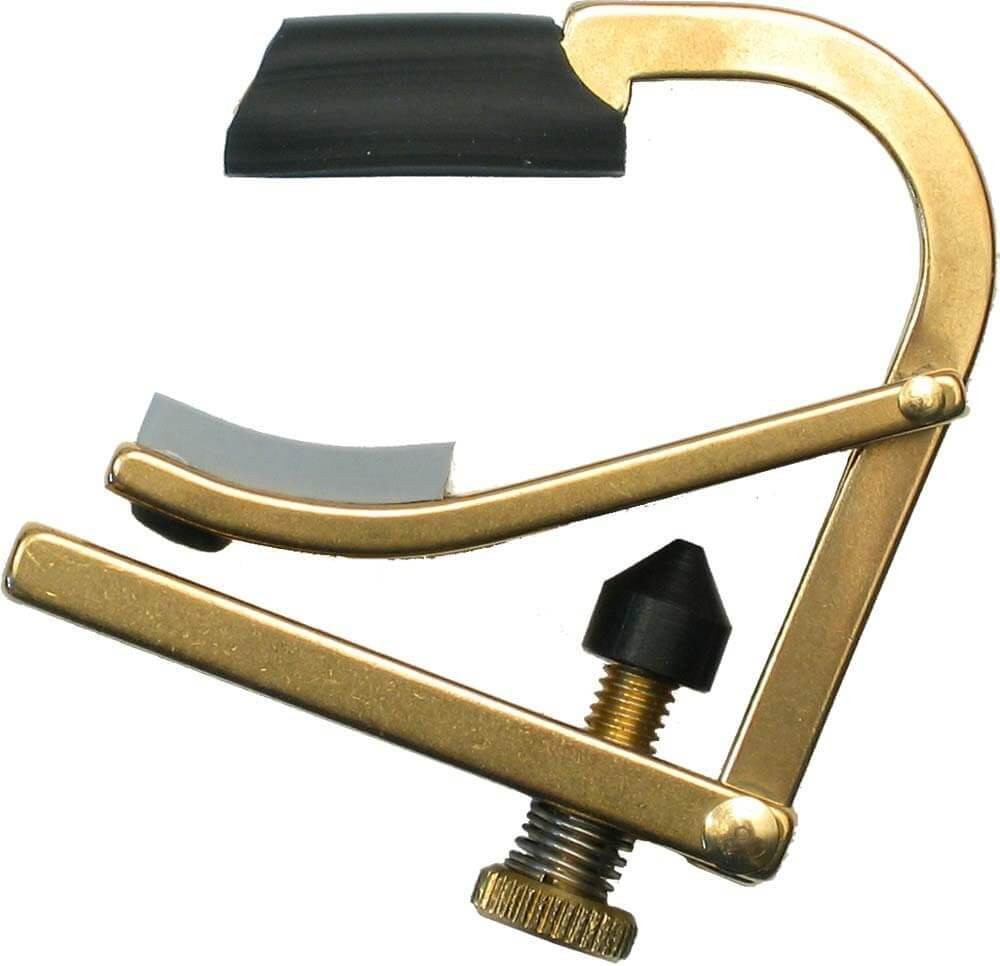
Also known as an Esus Capo, this one allows for center string capoing. It comes with instructions on how to create some unique tunings on your guitar without having to do a bunch of string winding.
Guitars I’ve used it on: Guild, Gibson, Martin, Breedlove, Santa Cruz, Stone Bridge, Rain Song
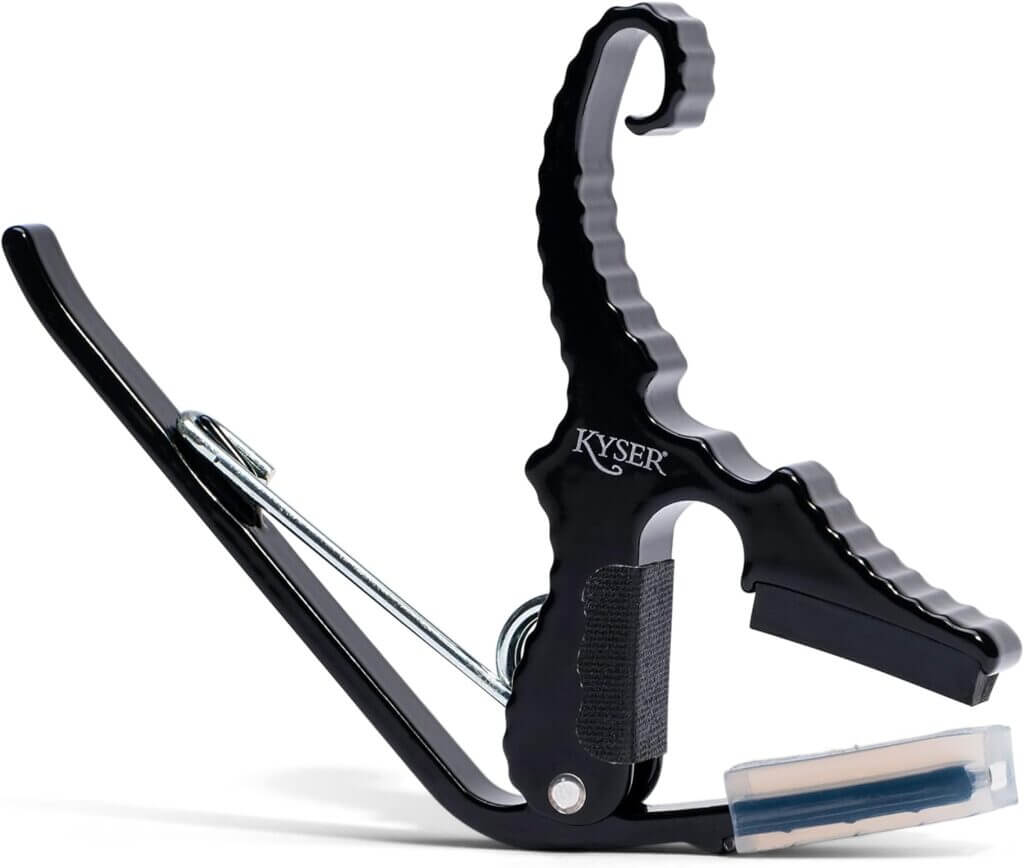
Another good one to monkey with for special tunings. This one is similar to the Shubb Short Cut. It also comes with instructions on how to use and create some starter tunings.
Mine went to a friend since the whole Jurassic look bothers me, but a solid capo if you’re already using Kyser and like the brand.
Guitars I’ve used it on: Guild, Gibson, Martin, Rain Song and Taylor.
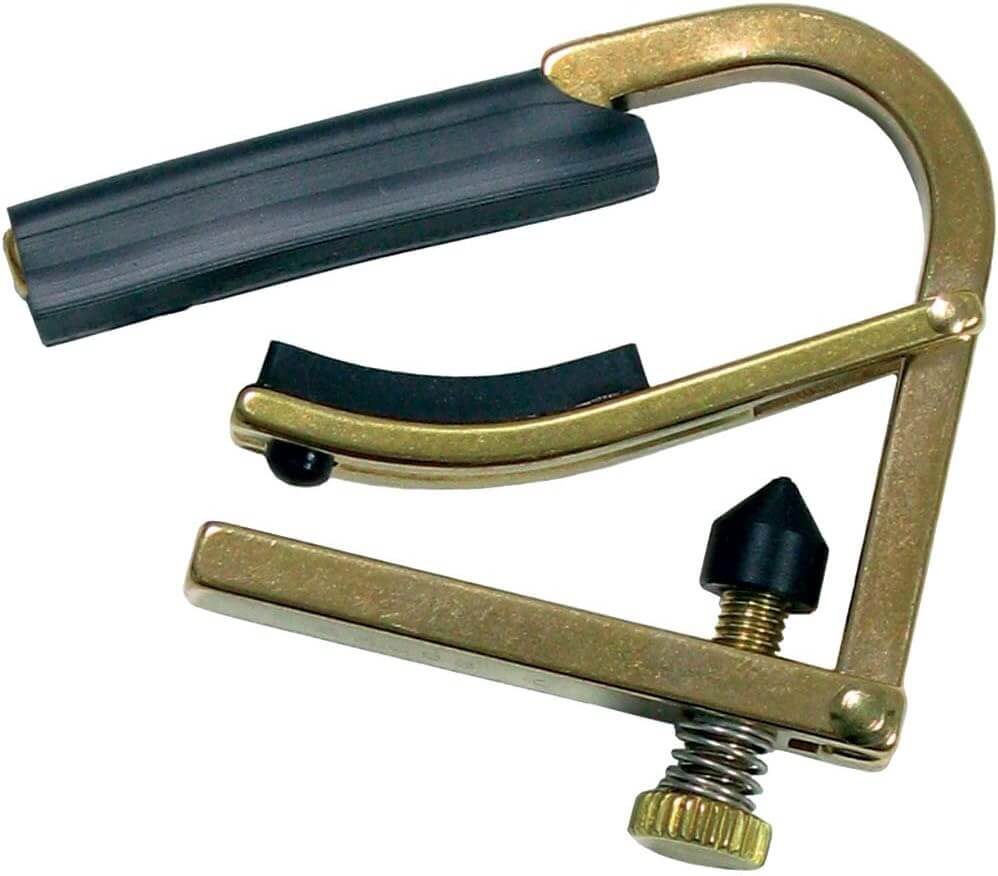
While you can always back off of your regular 6-string capo, I do like the fact that there’s a 5-string available. By using a dedicated 5-string, you don’t have uneven pressure on the fret board or capo parts hanging over.
I’m not sure if “capo parts” are a bad thing – but they sound bad, so best to avoid them if you ask me.
Guitars I’ve used it on: Gibson, Martin, Rain Song and Taylor.
PARTIAL CAPO BOOKS
Books are particularly handy for figuring out partial capos, and there are some great ones from Harvey Reid. We’ll start with a couple that are helpful for not only beginning partial capo users, but beginning guitar players as well.
